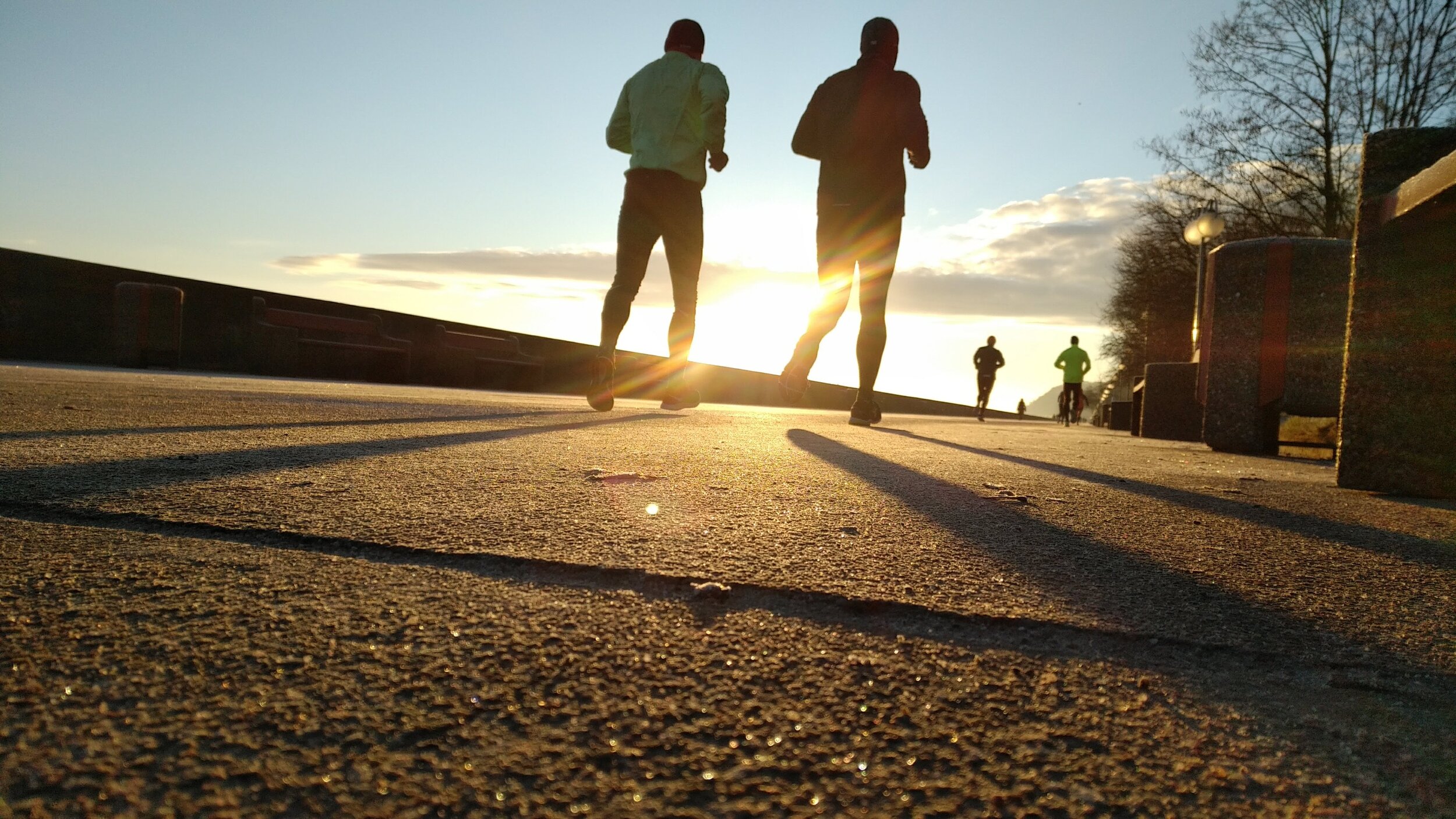How Does Sunlight Benefit Weight Loss?
Sunshine Can Offers Many Health Benefits
Benefits of Sunshine
This is the time of year almost all of us appreciate the longer days of sunlight– and whether in Santa Monica’s "May-Gray" or Portland style Spring, we love the feel of springtime rays on our skin. Let's look at the many health benefits of sunshine - before we need to pay attention to warnings of over-exposure.
The Magic of Vitamin D
Vitamin D is a unique vitamin that most of us do not get enough of. In fact, it is estimated that more than 40% of American adults have a vitamin D deficiency. Yikes!
This vitamin is made from cholesterol in your skin when it’s exposed to the sun. That’s why getting enough sunlight is very important for maintaining optimal vitamin D levels. Read on!
Sense of Well Being - Boosting Our Brain Chemicals
Sunlight helps boost a chemical in your brain called serotonin.
This powerful neurotransmitter can give you more energy and helps to keep you calm, positive, and focused. Doctors sometimes treat Seasonal Affective Disorder ( SAD ) and other types of depression linked to low levels of serotonin with natural or artificial light to boost Vitamin D and neurotransmitter levels.
The light-induced effects of serotonin are triggered by sunlight that goes in through the eye. Sunlight cues special areas in the retina, which triggers the release of serotonin. So, you’re more likely to experience this type of depression in the wintertime, when the days are shorter.
Due to this connection, one of the main treatments for depression with seasonal patterns is light therapy, also known as phototherapy. You can get a light therapy box to have at home. The light from the box mimics natural sunlight that stimulates the brain to make serotonin and reduces excess melatonin.
Sunshine Makes Us Happy!
Sunlight Benefits Eye Health
While too much direct sunlight can damage your eyes, moderate exposure, especially in your teen and young adult years up to age 30, may help prevent myopia (trouble seeing things at a distance (nearsightedness). Some experts connect the elevated rates of myopia (a reshaped eye) to the many hours young people stare at computers and other screens. See the NYT article about this.
But maybe it’s the side effect of all that screen-watching rather than the screens themselves — kids are not getting outside into sunlight! I hate to date myself and say "when we were kids..." But the truth is, we were outside playing almost all the time, getting gobs of Vitamin D and definitely not being entertained on a digital screen. 'Kick the Can' anyone?
But seriously, studies by researchers at King’s College London, and other institutions found strong correlations between subjects’ current eyesight and lifetime exposure to sunlight, above all UVB radiation (which is responsible for burning). People who had gotten the most sun up to the age of 30 had better vision at a distance.
Protect Your Eyes
Faithfully wear sunglasses that are designed to block UV light. Vitamin D is synthesized in our skin, not directly through our eyes.
Chole-calciferol (vitamin D3) is produced in the skin by UV irradiation of 7-dehydro-cholesterol (a kind of cholesterol present in animals and humans). So be sure to protect your eyes from the damaging effects of direct sun. And wear broad-brimmed hats whenever you are exposed to sunlight, including while driving or riding in a car.
Disease Protection
Skin cancer is very serious (and on the rise) and too much time outside without protection does raise your risk of skin cancer. On the other hand, people who live in places that don’t get much sunlight may be more likely to have other types of cancer including breast, colon, prostate, and lung cancers. Their odds of getting other serious conditions, like multiple sclerosis, high blood pressure, diabetes, and heart disease, may be higher, too. Scientists think this might be linked to lower levels of vitamin D. So as in all things, moderation is key - using appropriate protection will give you the benefits and at the same time reduce your risk of over-exposure.
For people suffering from certain skin conditions like eczema, psoriasis, and vitiligo quality of life can be seriously affected. Regular, small amounts of ultraviolet light found naturally in sunshine, or in safe and limited use of tanning beds, may help ease the symptoms of these sometimes debilitating skin problems.
Steps to reduce your risk of skin damage from the sun – and skin cancer:
Stay in the shade. ...
Use sunscreen. Sunscreen is an important part of sun protection. ...
Cover your arms and legs. ...
Wear a hat. ...
Wear sunglasses. ...
Do not use tanning beds.
If you plan on spending a lot of time in the sun, make sure to avoid getting sunburned.
Use Sunscreen
It’s best to apply sunscreen after 10–30 minutes of unprotected sun exposure to avoid the harmful consequences of excess sunlight. Your exposure time should depend on how sensitive your skin is to sunlight.
Look for “broad exposure” which blocks more of the UV light. Try to stay out of the direct sun between 10 a.m. and 4 p.m., when the sun’s rays are strongest.
Note that experts recommend reapplying sunscreen every two to three hours you spend in the sun, especially if you’re sweating or bathing.
Better Sleep after Daytime Sunshine
Better Sleep with More Sunshine
Light can be very helpful for people who suffer from difficulty sleeping or insomnia. Therefore it makes sense that sunlight can help regularize our patterns of sleep and wakefulness.
As the principal control of our day-night cycle, influencing everything from body temperature to metabolism to sleep getting enough light is serious business. Without it, our bodies will run on a pattern determined by our genetics (called tau ). This may not be quite 24 hours in length, and the daily discrepancy can add up. We also have natural tendencies that determine when we most want to sleep. Surprisingly only about 10 percent of people are true night owls; the rest of us may stay up too late (disrupting our natural cycle) because of lifestyle demands, stresses, and socializing patterns.
When the timing of sleep runs counter to our social obligations, it can be problematic. Falling asleep and waking too late may represent delayed sleep phase syndrome. On the other hand, falling asleep and waking too early may characterize advanced sleep phase syndrome. If this is going on with you properly timed exposure to light (and perhaps melatonin ) can make a huge difference.
Basically, our eyes need light to help set the body’s internal clock and early morning sunlight in particular seems to help people get to sleep at night according to a natural rhythm. And as we age this becomes even more important because our eyes are less able to take in light, which can result in problems getting to sleep.
Does Vitamin D help with weight loss?
Morning light does seem to help people keep the fat off. Scientists have lots of theories as to why sun rays seem to affect fat loss. Here are a few of those theories in addition to the possibility that the sun’s rays may shrink fat cells below your skin’s surface.
Hypothalamus is a key to fat loss
Our hunger is largely controlled by a part of the brain called the hypothalamus. And the hypothalamus works with the neurotransmitter serotonin to relieve hunger.
As the body reaches its needed calorie intake, the hypothalamus signals the body to release serotonin, making us feel full. Seasonal affective disorder happens when we don't get enough sunlight which causes a drop in serotonin levels. Insufficient serotonin release can result in fullness not being achieved as quickly as when serotonin levels are higher. This naturally can cause a greater calorie intake. Have you ever experienced when you have eaten, ergo you are not hungry, but you still "need" something?
Heat-Production
Another way that sunlight may play a role in weight loss has to do with Brobeck's theory of heat -production. This theory states that as the body temperature drops, you feel hungrier. As the body temperature rises, you feel less hungry. This can result in greater calorie consumption during periods with less sunlight, which can cause a fluctuation in weight. Having grown up in Canada I can attest to this!
Warm and rich "comfort food" is especially enticing in the winter right? And winter means less sunlight along with cooler temperatures.
Time of day
Midday, especially during summer, is the best time to get sunlight. That's because at noon, the sun is at its highest point, and its UVB rays are most intense. That means you need less time in the sun to make sufficient vitamin D. But "less time" is the operative here. You want this sun exposure to be BRIEF at mid-day!
Not only is getting vitamin D around midday more efficient, but it might also be safer than getting sun later in the day.
And of course, it depends on the time of year and the latitude of your location. For example, in the UK, 13 minutes of midday sunlight exposure during summer three times per week is enough to maintain healthy levels among Caucasian adults while In Oslow, Norway, 30 minutes of midday summer sun exposure is recommended. This is equivalent to consuming 10,000–20,000 IU of vitamin D.
If you want longer exposure then you need 20 to 30 minutes between 8 a.m. and noon to make a difference. Avoid later afternoon sun exposure which one study found may increase the risk of dangerous skin cancers.
The Benefits of Sunshine for Vitamin D
Just like our environment, we need sunshine to thrive. Though too much sunlight comes with its own health risks the benefits of sunshine when properly utilized far outweigh the negatives. So go on, step away from that screen, drag your kids away from their devices, and turn your faces to the sweet rays of Spring sunshine.



